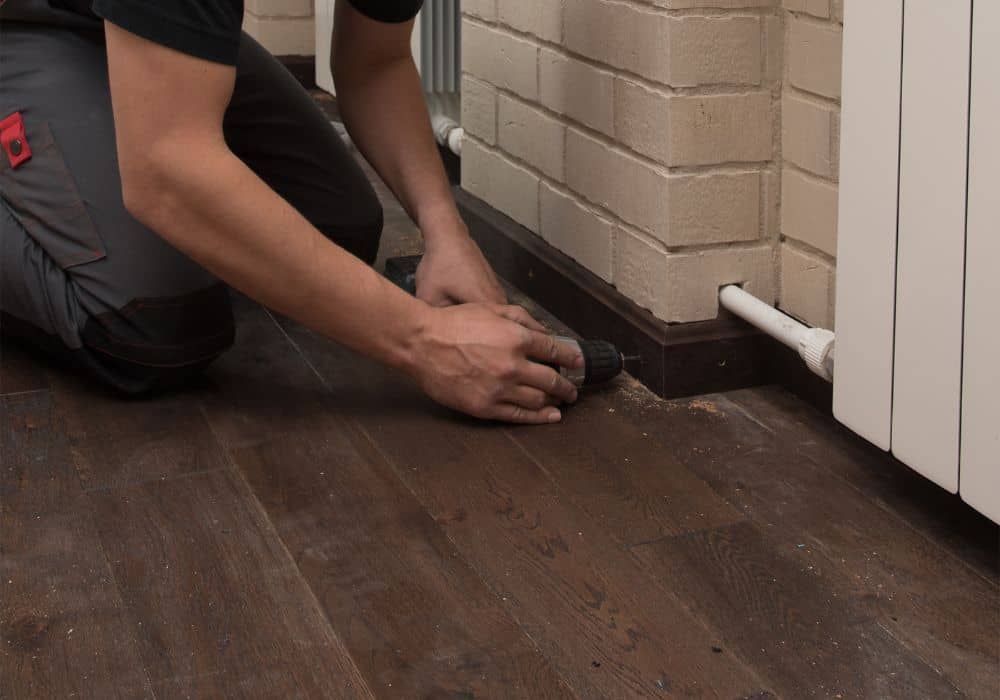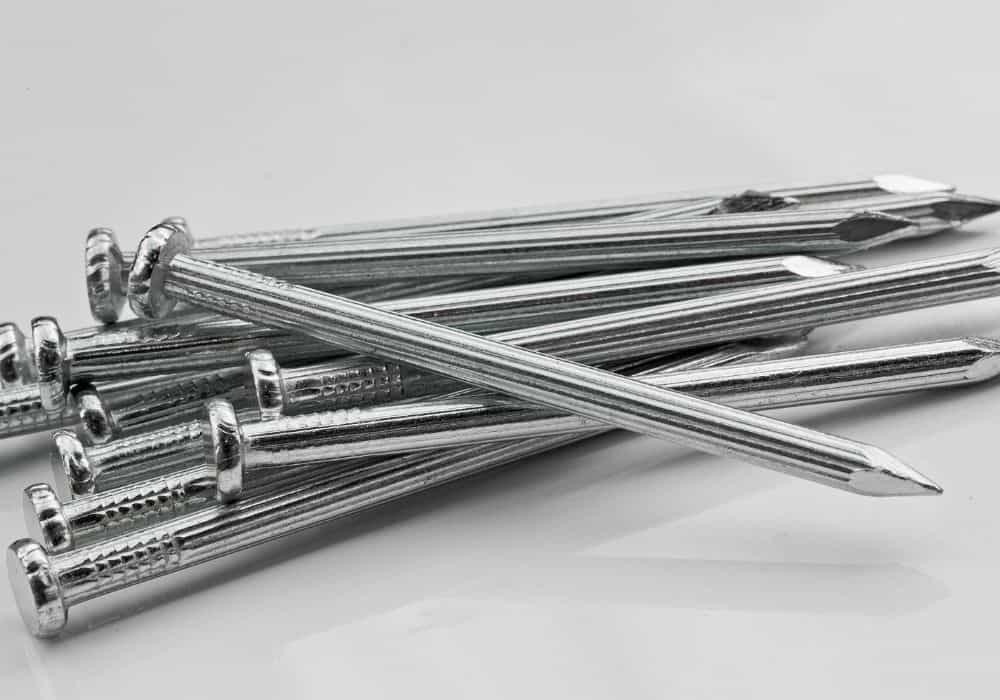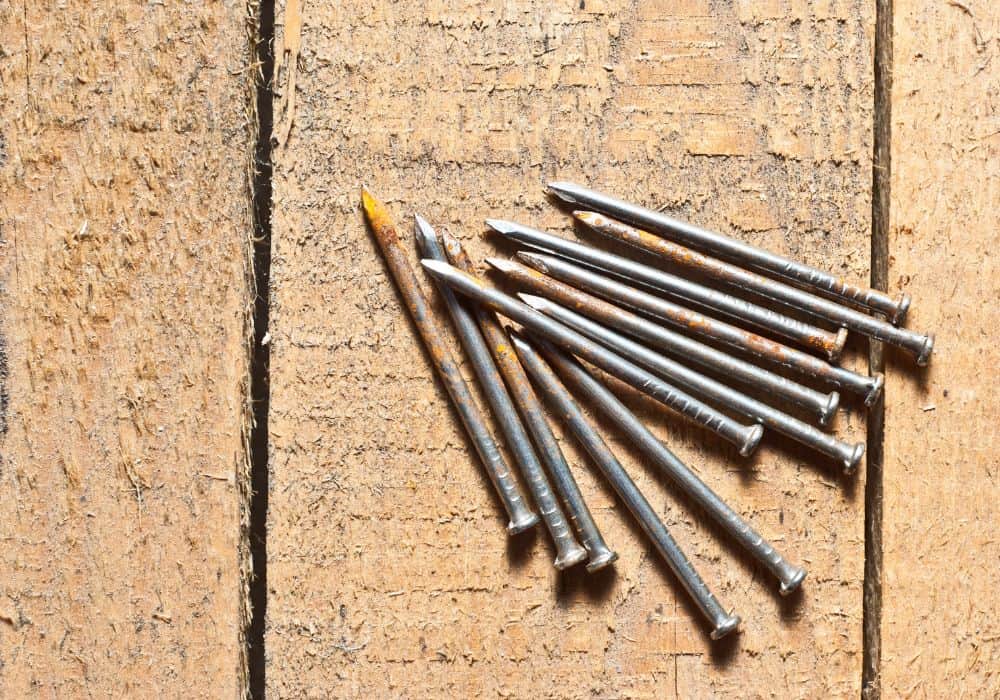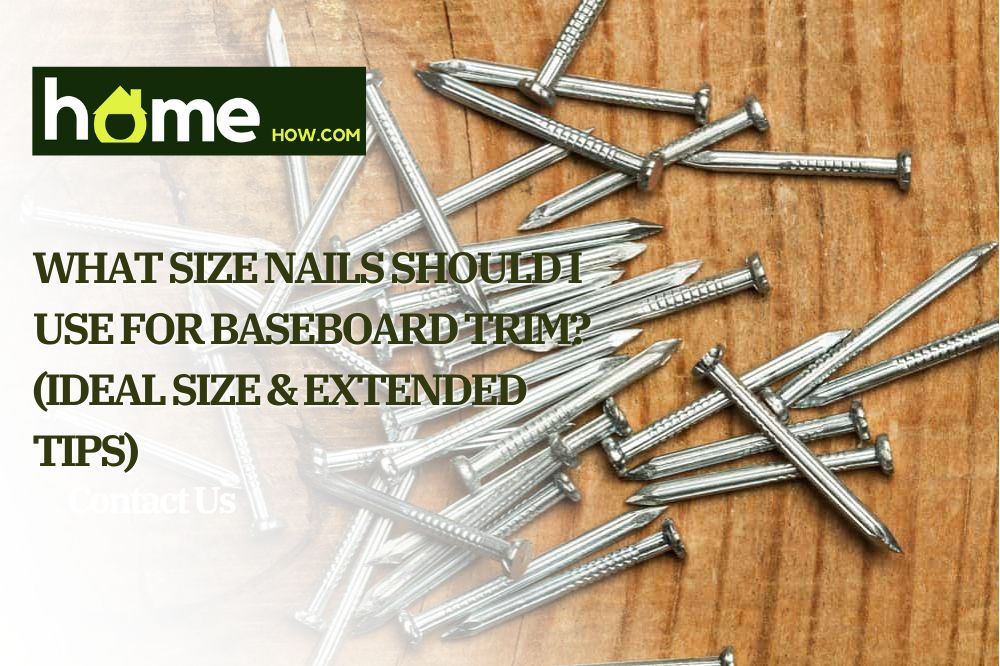Nailing down the baseboard is a common way to attach it, so you’ll want to ensure that whatever nails you use are large enough for the job. If it’s too small, the baseboard will not stay in place, and with a longer nail, you risk ruining the structural components (pipes and drywall) behind the wall.
Here we’ll review essential information about baseboard nails and utilize it to decide what size nails will go with the project. It’s essential to use the right method, depending on specifics like your baseboards’ height and position. You’ll ask yourself the following questions when DIYing a baseboard!
Is It Important To Get Baseboard Trim Right?
Incorrectly attaching baseboards to the wall can cause problems later in the installation process. Many assume that walls are perfectly straight and their corners are precisely 90 degrees. This is only sometimes the case.
When nailing the baseboards to drywall, you’ll discover whether or not they are sturdy enough for your needs. As you work around the wall, you’ll notice that some parts slope inward more than others. You must accurately nail the baseboards to the wall if you want an attractive finished product.
Additionally, you’ll find that some of your baseboards have gaps. This is often due to a poorly cut piece of wood or a mistake on your part when measuring the length. Before nailing any baseboard down, make sure that it fits tightly against the wall.
What Size Nail Do You Need to Fasten Baseboard Trim?

When you go shopping for nails, you’ll notice a lot of terminologies that may be unfamiliar. In addition to length and gauge (the thinness or thickness of the nail), suppliers talk about “d.”
What size or gauge you buy is not important as long as it’s the right length.
When installing baseboard trim, you should use 2-inch (6d) or 2½ -inch (8d) 15-18 gauge finishing nails. However, using shorter 1 ½ inch finish nails would be better if the trim is fragile.
Factors You Should Take Into When Choosing Nail Gauge And Length
1. The Perfect Nail Length
The ideal length of nails used for baseboard trim varies from 1½-2½ inches. Longer nails should not be used unless you specifically need deeper penetration.
Using too long a nail will not hold properly and could be pulled out easily.
2. The Best Gauge Number
Although you can make your work neater by using small-gauge nails, neatness isn’t the only important consideration.
Generally speaking, the thicker the trim is on a given project, the larger and fatter your nails should be. Thinner or smaller gauge numbers mean that you should use thinner nails.
While nail size does not directly relate to holding power, a larger-diameter nail will create more resistance in the wood than a smaller one. Your project should use appropriate nails based on their gauge and thickness.
When you choose a nailer, it is helpful to know that bigger nails (15 and 16-gauge) are often referred to as finish nails. Midsize nailers that are used for 18-gauge nails generally go by the name “brad nailer.” The smallest type used for the smallest gauge nails (23 or smaller) is known as a pinner or micro-pinner.
You will only need one nailer for the entire project.
3. Baseboard Trim Sizes

Baseboard trim comes in many different sizes. The widths are measured in inches, and the lengths are measured in feet. You’ll want to choose a size that works best for your project so that there’s enough material left over for any repairs or replacements that may be needed down the road.
To determine the length of nails you should use in woodworking projects, multiply the thickness of your trim by three. For example, ¾-inch baseboard trim would require 2½”-long nails for attaching to walls.
It’s also crucial that the baseboard fits snugly against the wall so that there aren’t any gaps between them where dust and dirt can collect.
4. Drywall’s Thickness
To make the job easier and ensure that you don’t damage your walls, use nails that penetrate ¾ inch or more into drywall. Traditional drywalls are ½-inch thick and will leave unsightly holes if their surface is breached at all by a nail head.
What If You Use Nails Larger Than The Recommended Size?
If you use nails that are too long, you run the risk of hitting plumbing pipes or cables inside walls. You also run the risk of damaging your finish. If you use nails that are too short, they will not hold as well and may even pop out when you’re done fastening them.
You need to be careful that the nail you use has a diameter small enough, so it doesn’t cause splitting where the baseboard is attached.
What Is The Best Way To Attach Baseboards?

Nailing down the baseboard frame is easiest and most effective with a nail gun. However, choosing the right nail gun can be tricky if you have limited funds available for projects.
For most people, a finish nail gun with a good battery is the best option for installing baseboards because it can easily shoot nails without requiring any additional force.
They’re a wise investment. They cost between $80 and $200, will last years if properly cared for, and can be used to complete many other home improvement projects such as crown molding, hardwood flooring, and decorative trim.
A hammer and nails will be sufficient if you’re working with a limited budget. Use a hammer and nails if you have the time and patience to do it right.
What Type Of Nail Gun Is Best Suited For Installing Baseboards?
To make this determination, you must first understand the difference between a finished nailer and a brad nailer.
1. Finish Nailers
This nailer is primarily used for driving 16-gauge nails or 15-gauge nails. They use a special nailhead called “gauge finish nails.” Its unique design allows it to be stored at an angle on the gun.
This angle is ideal for applications where space is an issue. The smaller 16-gauge wire can be challenging to handle in tight spots, as it tends to bend or buckle under pressure.
2. Brad Nailer
Brad nails range in size from 18 to 22 gauge and are used for many applications. Some professionals use brad nailers to secure base caps on shoe molding. However, because of their small size, these tools are used for concealment rather than decoration.
Nail guns are fast and efficient tools that help you finish jobs more quickly. They can be used for any woodworking project, from minor repairs to extensive renovations.
When choosing the right nail gun for your needs, make sure to consider the type of work you do most often and what materials you’re working with.
How To Get Rid Of The Nail Holes In Baseboards
Never use caulk to repair nail holes. Caulk contracts and, rather than filling up the gap so it’s invisible when you paint over it, caulk creates a divot or indentation in the painted surface where each nail was located. The finish doesn’t look as neat because smaller holes appear on it.
Instead of contracting paste, opt for Spackling paste that can quickly fill the baseboard holes. It forms easily and stays put, unlike other types of fillers that crumble when you apply them to a surface.
Once the wood dries, it is easy to clean up, and you can sand it for a smooth finish.
To re-sand and apply more filler, repeat the process. One of the best things about this method is that it can be used in other situations where drywall or trim fillers are needed — like scarf joints (where two pieces of wood meet at an angle) or inside and outside corners.
Alternatively, you can also use a wood filler that can easily be painted over and gives the base a nice finish.
Can You Install A Baseboard With No Nails?
Generally, lightweight wood with a thin profile works best when you plan to glue it in place. Quality construction-grade adhesive will give you a tight-fitting, professional finish if used correctly.
You will need to devise a way of holding the trim in place while the adhesive dries. The best way to use wood glue is on the edge of a room that opens into another space so you easily clamp the baseboard.
Adhesives can be used almost anywhere, although you’ll have to wait longer for them to dry if they’re not in an area that’s exposed directly to air.
Different types of glue dry at different rates: so make sure only to commit yourself once you’ve tested whichever product seems right for this particular job.
Final Thoughts
When a construction project involves using nails, it’s crucial to ensure that you’re using the right size nail for each job.
Consider the thickness of your baseboard when nailing it since that will affect how solidly it will be attached. The same goes for any other type of trim you may use in a room: thicker trims are harder to nail into place than thinner ones.
Now that you’re familiar with our choices let us know which ones you prefer by leaving a comment.
